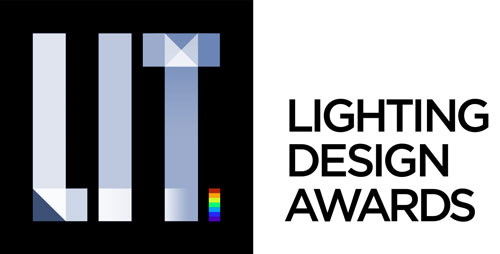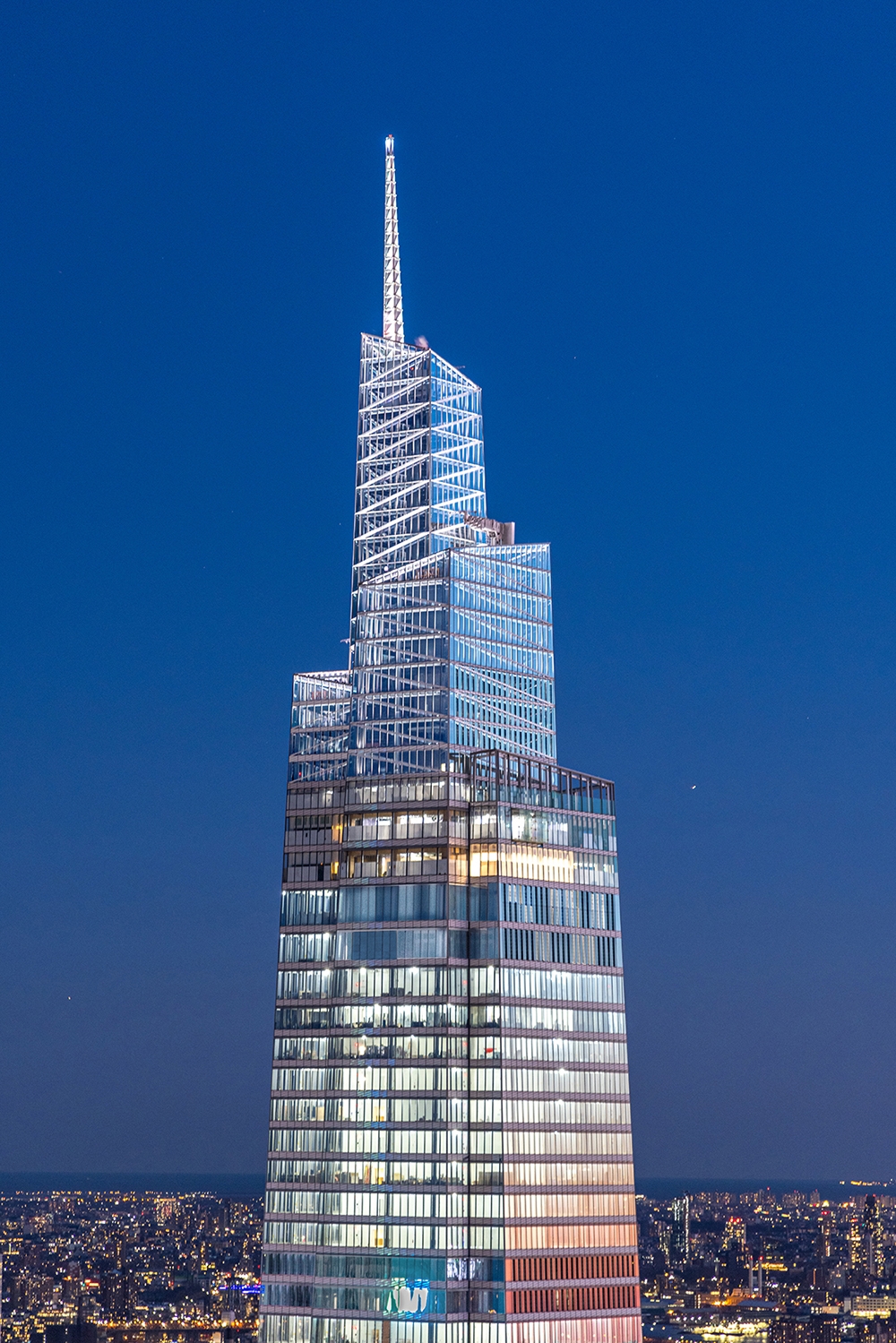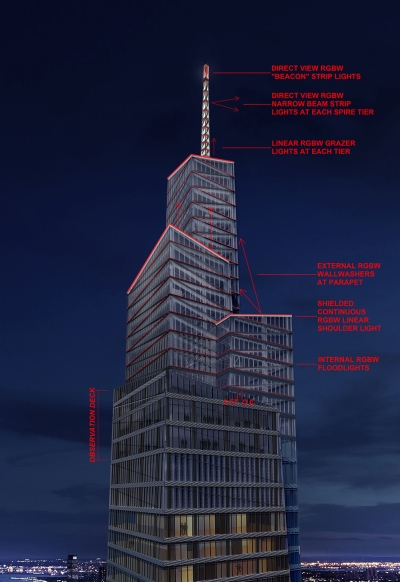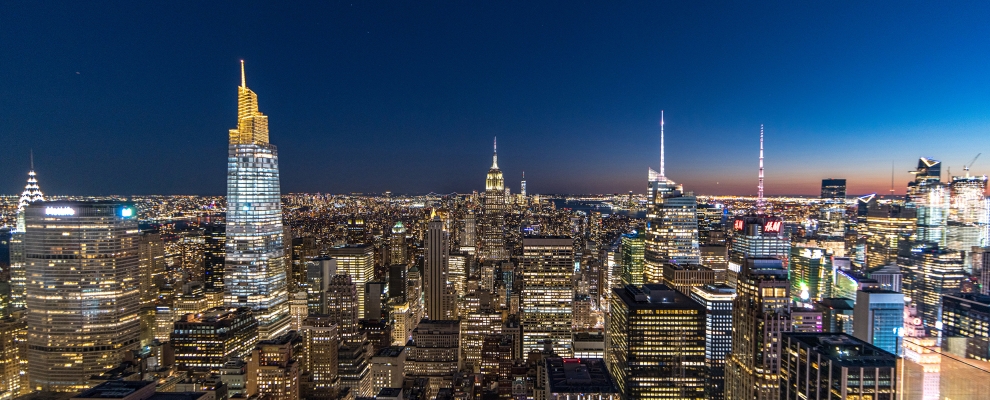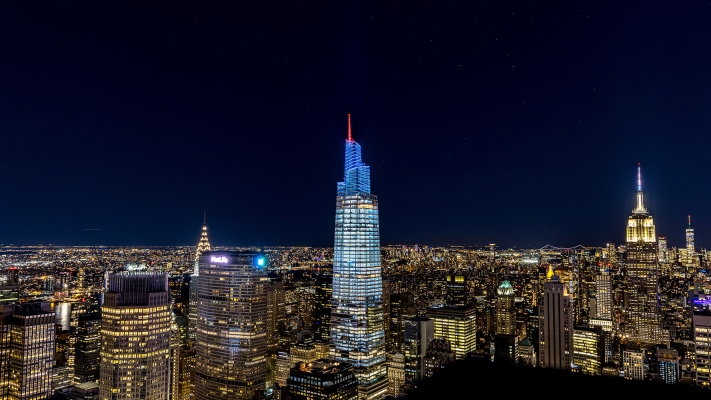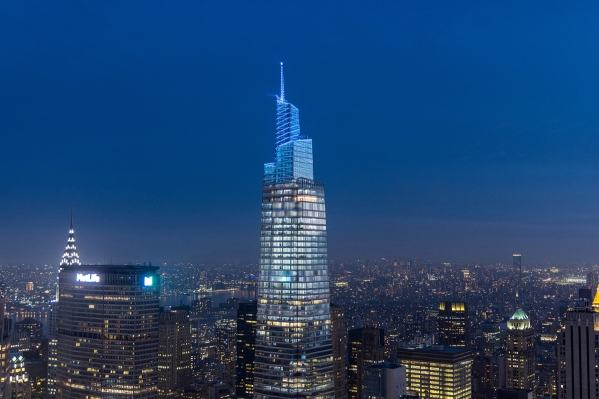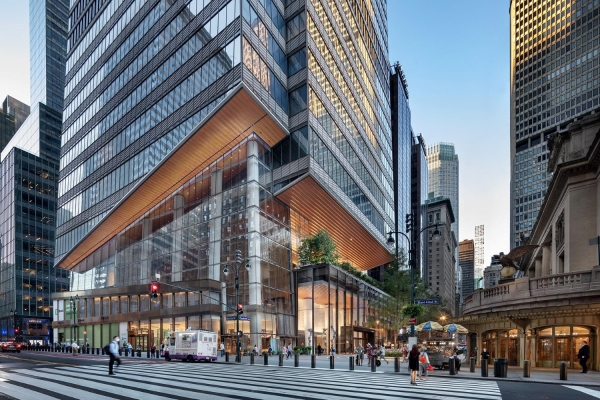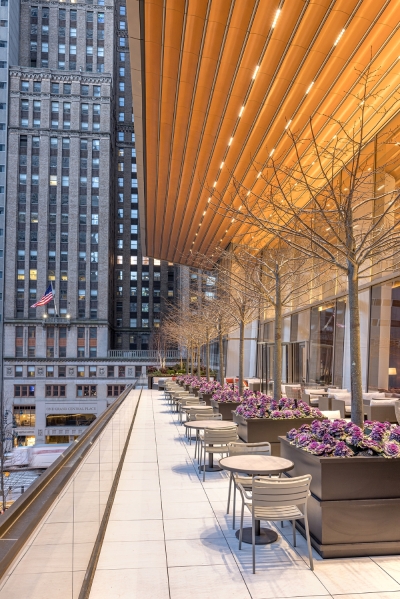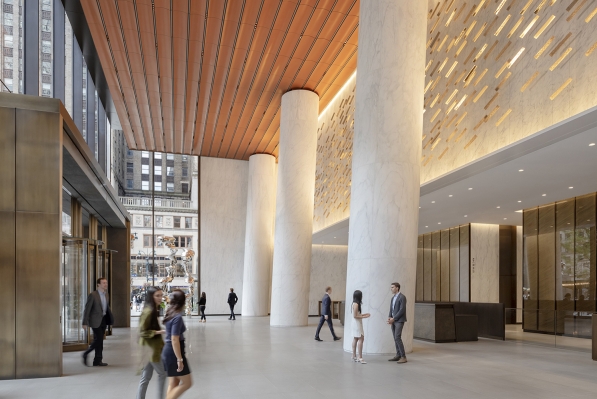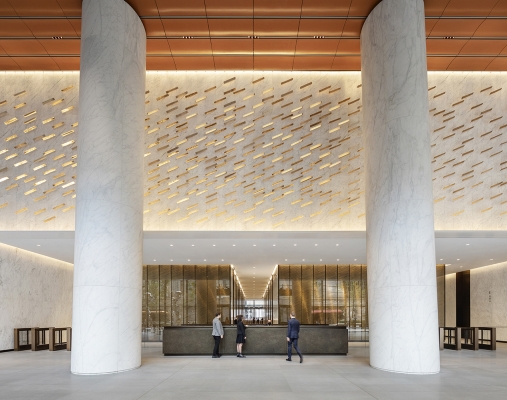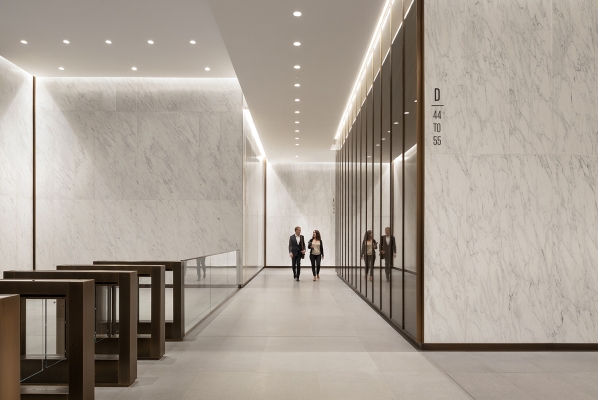Prize(s) Honorable Mentions
Company Tillotson Design Associates
Lead Designers Suzan Tillotson, Erin Dreyfous, Whitney Mire, Eduardo Zepeda, Mark Kubicki
Other Designer's names Thomas Bergeron (Former TDA), Nicolas Herrera (Former TDA), Alexander Rossini (Former TDA)
Client SL Green
Photo Credits Max Touhey, Michael Moran / OTTO
Other Credits Kohn Pedersen Fox
Completion Date 10/21/2021
Project Location New York, NY
Entry DescriptionThe top of this office tower is an iconic new jewel in the NYC skyline.
The 3 crown volumes glow internally with RGBW LED floodlights mounted at each level to wash the mullions and structural components. Texture is created with high powered, narrow beam floodlights mounted at roof setbacks to highlight the exterior façade mullions of the uppermost “snorkel” volume. A continuous parapet mounted strip light outlines the top of each crown volume to emphasize their sloping, non-directional forms. The 4-sided pyramidal white metal spire is grazed with light to showcase the subtle diagonal structure. An array of direct view striplights ring the top of the spire to form a beacon of light visible from all directions in and around the city.
The Crown’s program capabilities range from a “flame” of light for Yom Kippur to animated “fireworks” for July 4th. Each 1-ft segment can be controlled independently.
Uplighting of the terracotta soffits blurs the line between exterior and interior. The lobby ceiling and art wall are strategically lit from the top of the entry portal. Discreet downlights live within a narrow reveal in the terracotta panels. Grazers wash the wall to float the suspended bronze flecks while linear lights in front create shimmer on the panel material. The overall piece is front lit with projectors. Elevator lobbies glow from luminous light coves and accentlights.
Sustainability ApproachIlluminating the top of a building could be considered unnecessary and therefore a waste of energy. But with that, what it adds to the unique character of the surrounding district and how it may provide a source of information or mark a meaningful holiday or anniversary must also be considered. We spent much of the early design phase discussing with the team how to do this in a way that felt sensitive and responsive to the current world we live in. We started by scaling back the illumination to what we felt were the critical surfaces and materials. If you’ve observed this crown within the greater context of New York City, you’ll notice that the overall brightness and presence it has on the skyline is quite subtle. We challenged the status quo by illustrating that less can be more and in doing so ensured that the energy consumption for this system remained as low as possible.
